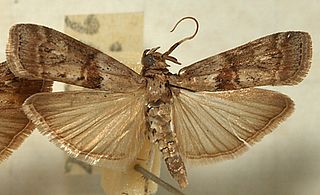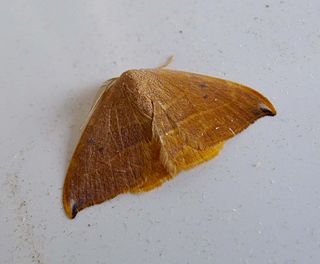
Quercus ilex, the evergreen oak, holly oak or holm oak is a large evergreen oak native to the Mediterranean region. It is a member of the Ilex section of the genus, with acorns that mature in a single summer.

The University of Delaware Botanic Gardens are botanical gardens and an arboretum located on the campus of the University of Delaware, in Newark, Delaware, United States. The gardens are open to the public without charge.

The Donald E. Davis Arboretum, in Auburn, Alabama, United States, is a public native plants museum, and botanical arboretum with educational facilities, event spaces, and a conservation program. Its grounds, covering 13.5 acres of Auburn University's campus, include cataloged living collections of associated tree and plant communities representative of Alabama's ecosystems, among which is mixed oak forest, carnivorous bog, and longleaf pine savanna. The living collections include more than 1,000 plant types, including 500 different plant species, with over 3,000 cataloged specimens. The Arboretum contains over a mile (2 km) of interwoven walking trails that meander through various southeastern biotopes.

Quercus coccifera, the kermes oak, is an oak bush in the Ilex section of the genus. It is native to the Mediterranean region and Northern African Maghreb, south to north from Morocco to France and west to east from Portugal to Cyprus and Turkey, crossing Spain, Italy, Libya, Balkans, and Greece, including Crete. The Kermes Oak was historically important as the food plant of the Kermes scale insect, from which a red dye called crimson was obtained. The etymology of the specific name coccifera is related to the production of red cochineal (crimson) dye and derived from Latin coccum which was from Greek κόκκος, the kermes insect. The Latin -fera means 'bearer'.

Satyrium ilicis, the ilex hairstreak, is a butterfly of the family Lycaenidae.

The Tyrrhenian-Adriatic sclerophyllous and mixed forests is an ecoregion in southern Italy, Sicily, Sardinia, Corsica, the Dalmatian Islands of Croatia, and Malta.

Stigmella suberivora is a moth of the family Nepticulidae. It is widespread in the western Mediterranean region, where it is found in Portugal, Spain, southern France, Italy, Corsica, Sardinia, Sicily, the Adriatic coast in Slovenia, Croatia and Bosnia. It is also found in North Africa, including Algeria and Tunisia. It is an introduced and established species in southern England. Records of leafmines in Mallorca are probably also this species.
Stigmella ilicifoliella is a moth of the family Nepticulidae. It is widespread in Portugal and Spain. In France, it is known from old specimens along the Atlantic coast near Bordeaux and in the Hérault and the Côte d’Azur near Cannes.
Stigmella eberhardi is a moth of the family Nepticulidae. It is widespread in the Mediterranean region, north to southern central Europe. It has been recorded from the Czech Republic and Slovakia, Austria, Hungary, south-eastern France, Spain, Portugal, Italy, Sardinia, Slovenia, Croatia, Macedonia, Greece and Turkey.

The Middle Atlantic coastal forests are a temperate coniferous forest mixed with patches of evergreen broadleaved forests along the coast of the southeastern United States.

Phycita is a genus of small moths belonging to the snout moth family (Pyralidae). They are the type genus of their tribe Phycitini and of the huge snout moth subfamily Phycitinae.

Quercus rotundifolia, the holm oak or ballota oak, is an evergreen oak native to the western Mediterranean region, with the majority on the Iberian Peninsula and minor populations in Northwest Africa. The species was first described by Jean-Baptiste Lamarck in 1785. It is the typical species of the Iberian dehesa or montado, where its sweet-astringent acorns are a source of food for livestock, particularly the Iberian pig. It has previously been described in the same species as Quercus ilex. Its acorns have been used for human nourishment since the Neolithic era.
Phycita coronatella is a species of snout moth. It is found in Spain, France, Switzerland, on the Balkan Peninsula and in Turkey.
Phycita diaphana is a species of snout moth. It is found in Portugal, Spain, Greece, Iraq, Egypt, Syria, Madagascar, Mauritius, Réunion, Yemen, Western Sahara and Israel.
Phycita poteriella is a species of snout moth. It is found in North Macedonia, Greece, Bulgaria, Romania, Croatia, Italy and Spain. It has also been recorded from Israel and Yemen.
Phycita strigata is a species of snout moth. It is found in Spain.

Drepana uncinula, the spiny hook-tip, is a moth in the family Drepanidae. It is part of the Drepana subgenus Watsonalla. It is found in France, Spain, Portugal, Italy and the western and southern part of the Balkan Peninsula. It was first described by Moritz Balthasar Borkhausen in 1790.
Morchella palazonii is a species of morel found in Spain.

For the most part, the history of forestry in Spain was one of increasing deforestation. Wood long was the main source of energy. In the 20th century, efforts were taken to revert the trend, increasing the forested area in the country from then on.










